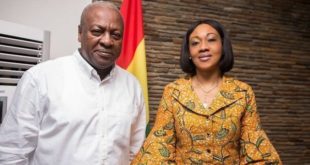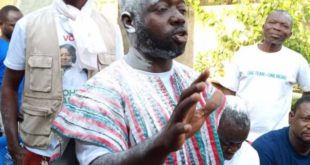Ghana anticipates the board of the International Monetary Fund (IMF) to meet before the end of the year to discuss the release of the second tranche of the $3 billion in cash, according to Dr. Ernest Addison, the governor of the Bank of Ghana (BoG).
This comes after the $600 million first tranche was successfully reviewed.
At the 115th Monetary Policy Committee (MPC) press conference in Accra on Monday, November 27, Dr. Addison made this statement while fielding questions.
“We expect the IMF board meeting to take place before to the year’s end, which should also trigger another foreign exchange disbursement,” he stated.
Prior to this, Ghana’s Minister of Finance, Ken Ofori-Atta, stated that the country has satisfied the first review’s six Quantitative Performance Criteria (QPCs).
On November 15, Mr. Ofori-Atta gave a presentation of the 2024 budget statement to Parliament. He clarified that the IMF supports the PC-PEG, or Post COVID-19 Programme for Economic Growth, which is evaluated biannually by an IMF staff review mission before being approved in full by the IMF Executive Board.
He further stated that payments made under the Program are contingent upon each evaluation being completed successfully.
The evaluations evaluate Ghana’s progress toward achieving the structural benchmarks (SBs), indicative targets (ITs), and quantitative performance criteria (QPCs).
Ghana’s first review commenced with the IMF fielding a mission to undertake a staff assessment from 25th September to 6th October 2023.
This review covered the assessment of:
i. six (6) Quantitative Performance Criteria (PCs);
ii. one (1) Monetary Policy Consultation Clause (MPCC) for inflation;
iii. three (3) Indicative Targets (ITs); and
iv. nine (7) Structural Reform Benchmarks (SBs) that were due at the end of September 2023.
“I am glad to inform this august house that based on the IMF’s own assessment (at the staff level) after the first review, Ghana met All six (6) of the Quantitative Performance Criteria (QPCs). The QPCs are a floor on net international reserves, ceiling on primary balance on commitment basis, ceiling on contracting non-concessional loan/guarantee, zero collateralized borrowing, and no accumulation of external debt service arrears.
“Two (2) out of the 3 Indicative Targets. The two ITs met are a floor on social spending and a floor on non-oil public revenue. The IT on zero net accumulation of payables was extended largely due to the ongoing negotiations with Energy Sector IPP on legacy debt.
Source: Ghanatodayonline.com
 Ghanatodayonline.com News, Politics, Health, Education & More
Ghanatodayonline.com News, Politics, Health, Education & More



